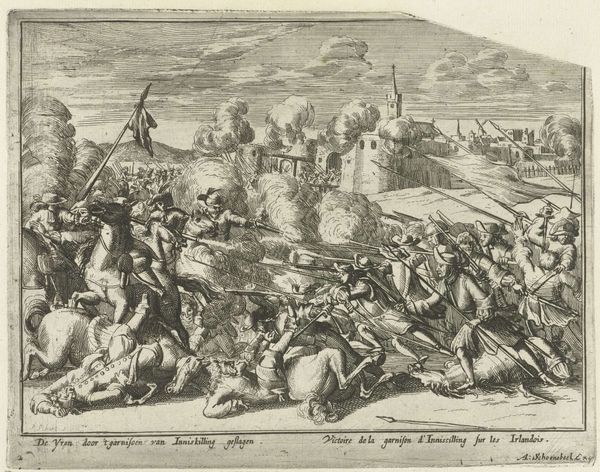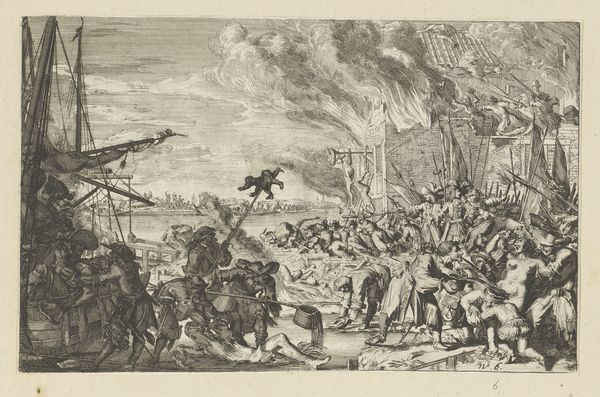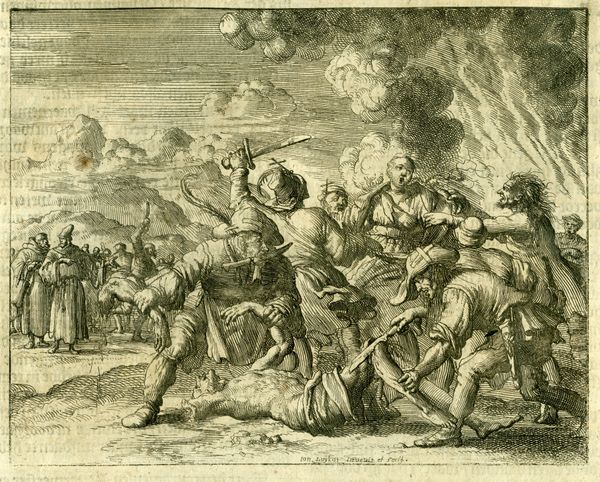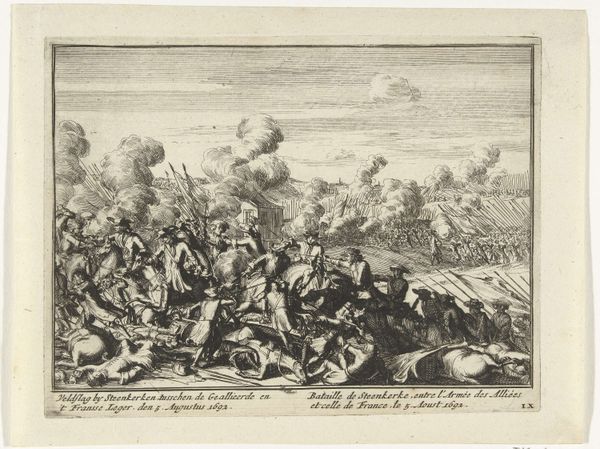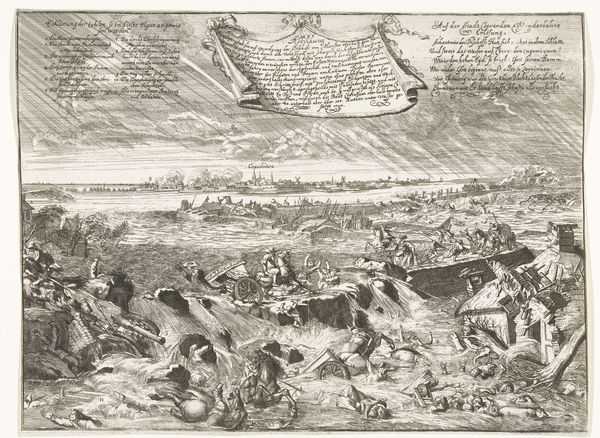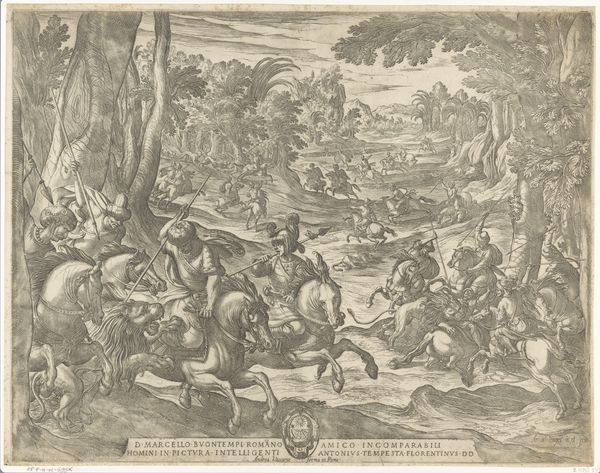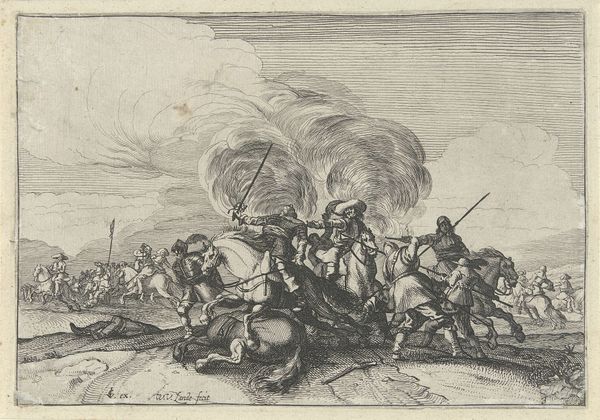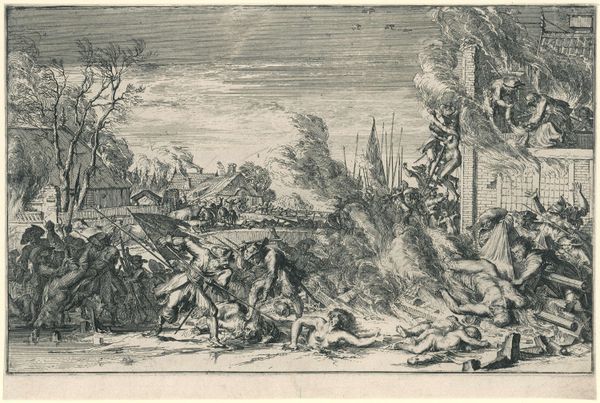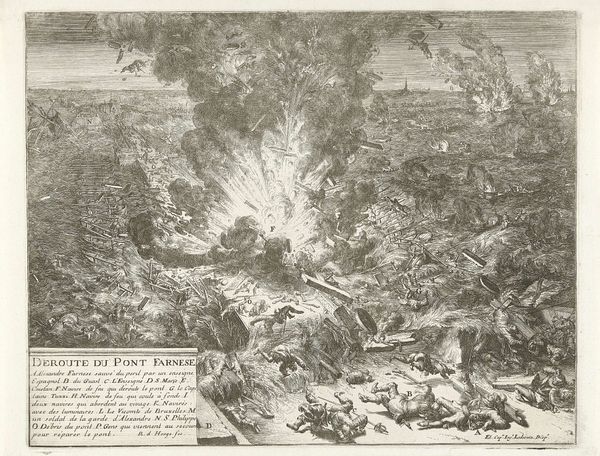
print, engraving
# print
#
landscape
#
mannerism
#
figuration
#
11_renaissance
#
line
#
history-painting
#
engraving
Dimensions: height 138 mm, width 181 mm
Copyright: Rijks Museum: Open Domain
Editor: This engraving, "Hemelvaart van Romulus," made in 1573 by Giovanni Battista Fontana and held at the Rijksmuseum, feels incredibly chaotic! The figures are dynamic, almost frantic, and the landscape is…stormy. How would you interpret this dramatic scene? Curator: The drama isn't accidental. Consider the socio-political context. In the 16th century, depictions of Roman history often served to legitimize contemporary rulers and states. How is Romulus depicted? Note his central position elevated above the action. Editor: He's standing very stoically amid the tempest, holding what looks like a staff. It's quite a contrast to the other figures who are scattering in all directions. Is his deification the artist’s intention? Curator: Precisely. The image translates into the language of power. Fontana presents Romulus’s ascent not as a moment of individual glory, but as a divinely sanctioned event witnessed by a community, which he will rule, thus legitimizing an idea of the necessity of sovereignty and a powerful state in the face of tumultuous times. See how even the storm seems to be swirling to his command? Editor: So it's less about religious devotion, and more about the political implications of portraying a ruler becoming a god. Were such visual claims common in this period? Curator: Absolutely. The Renaissance was awash with imagery linking rulers to classical and divine precedents. Printmaking, especially engravings, allowed these ideas to circulate widely. The choice of the engraving technique itself also allowed Fontana’s art to shape public opinion. This piece isn’t just art; it's a powerful statement about authority. Editor: That really shifts how I see it! It's a clever manipulation of history for contemporary political gain. I'll remember to consider the broader socio-political factors moving forward. Curator: Indeed. It's a reminder that art rarely exists in a vacuum. Examining its historical role allows us to unpack so much.
Comments
No comments
Be the first to comment and join the conversation on the ultimate creative platform.
